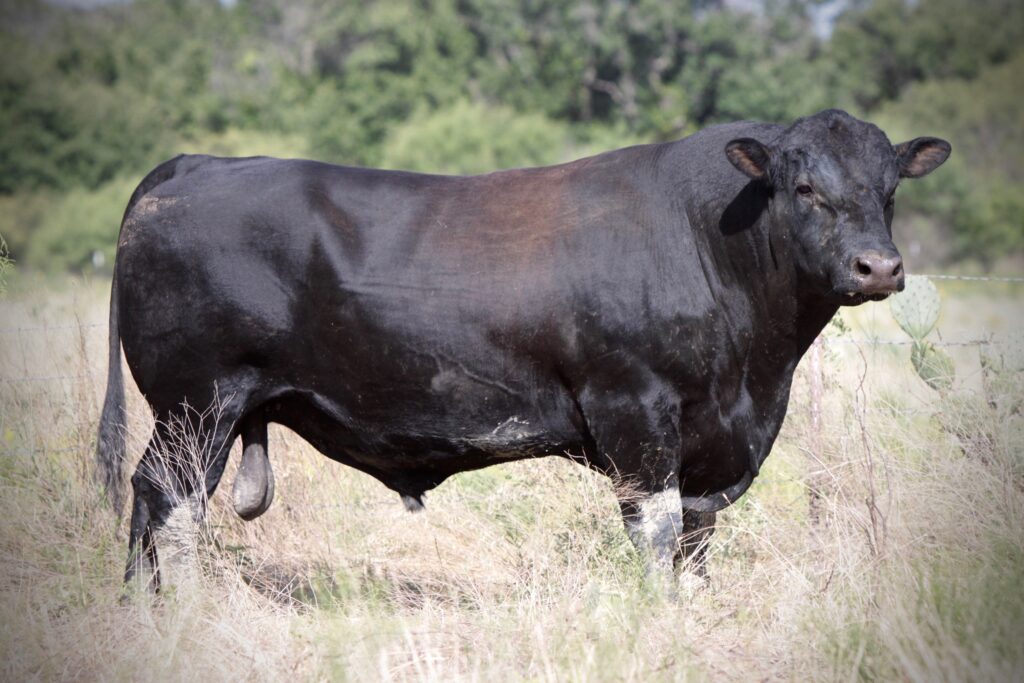When an East Texas cattle operation contacted Texas A&M AgriLife Extension Service cattle specialists in the Texas A&M College of Agriculture and Life Sciences Department of Animal Science after experiencing a rash of neurological, unknown issues with their calves, it started a seven-year search for answers.

The calves exhibited an unsteady gait with stiffened limbs, then collapsed and convulsed. The periodic episodes lasted three to 12 hours in duration. The observed signs were consistent with familial convulsions and ataxia or cerebellar abiotrophy, first reported in Angus cattle in Scotland in 1968 and in the U.S. in 1996.
Thomas Hairgrove, DVM, Ph.D., AgriLife Extension cattle veterinary specialist and professor in the Department of Animal Science, said diagnostic testing showed the samples submitted did not indicate an infectious or poisonous agent was involved, but parentage testing did indicate one bull sired all affected calves.
But narrowing down the cause was only part of the journey — they needed to determine if there were genetic mutations that could be found in the carrier bull. Working with the support of the American Angus Association, Hairgrove said their end goal was to help producers understand that when they saw these neurological symptoms in their herd, there could be a genetic defect involved.
“The important thing to the industry is that now we have identified a genetic mutation through this study,” Hairgrove said. “Before, this condition showed up and was assumed to be male dominant, but now with this study that inheritance was confirmed in this specific herd. Now we can rule out this identified mutation through targeted sequencing.”
Seven years of research
Joining Hairgrove from the Department of Animal Science in the research — first the cause and then the identification of the genetic mutation — were AgriLife Extension coworkers Jason Banta, Ph.D., associate professor and beef cattle specialist in Overton; Ron Gill, Ph.D., professor and beef cattle specialist, Stephenville; and Joe Paschal, Ph.D., Corpus Christi, professor emeritus and livestock specialist.
Beginning in 2016, the Texas A&M team attempted to find the responsible mutation by working with geneticists Jonathan Beever, Ph.D., at the University of Illinois, and Jessica Petersen, Ph.D., at the University of Nebraska at Lincoln.
The AgriLife Extension specialists decided to collect and freeze semen from the identified bull before his return to the breeder. In an attempt to recreate the condition, 25 cows at the Texas A&M Department of Animal Science facilities and 11 cows at the University of Illinois were impregnated with the affected bull’s semen. The cows calved in October 2018, with 11 calves at Texas A&M and one at the University of Illinois exhibiting clinical signs.
Calves from the original Texas ranch herd and those from the Texas A&M herd were necropsied by Brian Porter, DVM, a clinical pathologist in the Department of Veterinary Pathobiology in the Texas A&M School of Veterinary Medicine and Biomedical Sciences. Porter found brain lesions with no other signs of disease or toxicity.
Tissue samples from all affected calves from each herd and semen from the sire and grandsire of the calves were sent to Petersen in the fall of 2018, Hairgrove said.
Striking out, only to finally succeed
Hairgrove said even though they identified the cause, the goal of finding the answer to one question kept the project alive over the many years: How can I select against it?
From 2016 until 2023, Petersen’s lab worked on locating the mutation for this condition. It was found in the fall of 2023.
“Until about a year ago, we kept striking out,” Hairgrove said. “Many times, we were ready to give up, but we kept trying and finally figured it out. We found semen from the grandfather of that original bull we used in our study, and he did not have the mutation, so that helped identify the specific mutation in the study bull.”
That was the whole reason for the ongoing research, he said, to provide the cattle industry with answers and options.
“We know similar conditions have been reported for years, and cattle producers have seen it in their herds, but they didn’t know how to identify the cause,” Hairgrove said. “Now we have another tool in the toolbox with this documented mutation to be considered.”





